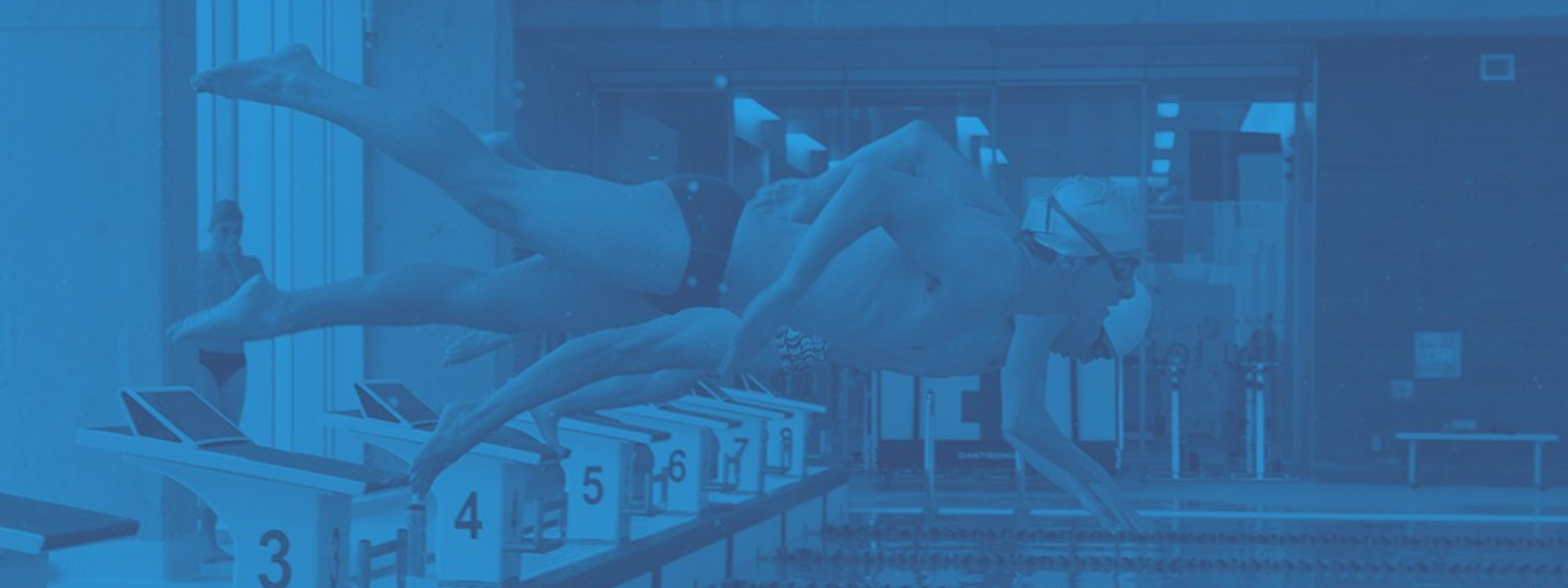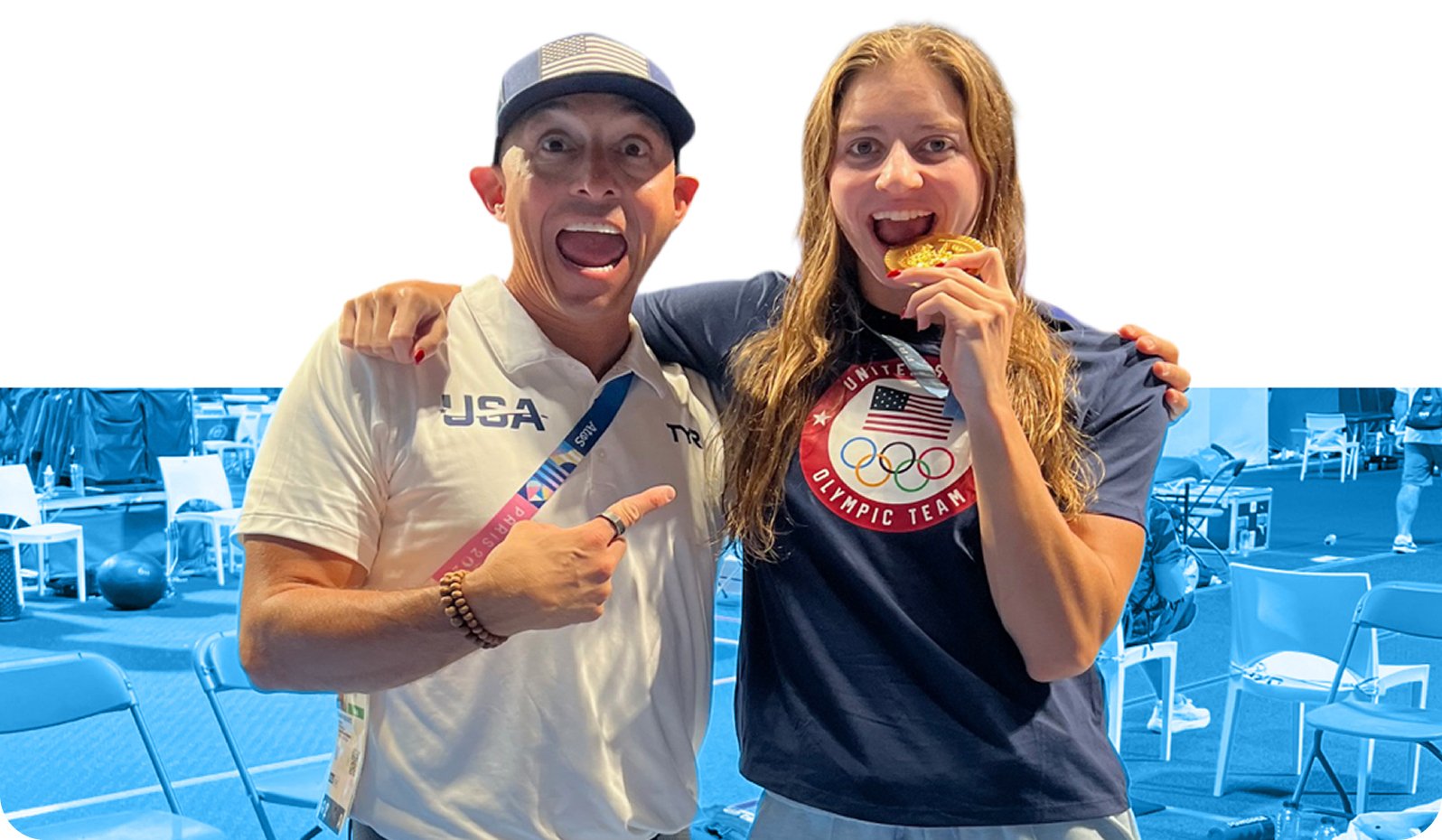Once you’ve received your TritonWear and before you hit that first workout, take some time to learn a few tips and tricks to make the best use of your unit. We’ve included this article to help you discover the best practices for capturing accurate data. Let’s get started.
How to wear your TritonWear unit?
One of the first and most essential practices in capturing accurate data is unit placement. A successful unit placement has three critical components: position, orientation and consistency.
Position. The unit should be placed on the occipital bone, just above the nape of the neck.
Orientation. The unit should be positioned vertically and in the head’s center.
Consistency. It is important to place your unit the same way for every workout. Being consistent will help the algorithm recognize your specific movements and create your unique swimming profile. Shifts in placement and orientation can throw the algorithm off.
Learn more: Triton Unit Placement
What are some common mistakes, and how to avoid them?
A unit can cause inconsistencies in data if:
- It is tilted forward. This is a common mistake when the unit is placed above a hair bun. It can cause the unit to tilt forward significantly. If this happens, you may see backstroke data being interpreted as merely standing, not swimming.
- It is tilted backward. This can be caused by a low-hair bun, where the unit is placed right below, and it causes it to tip back. The sensors will not be able to orient and will collect inaccurate data.
- It has flipped. If the unit is accidentally worn backwards with the unit’s black side (with the red T logo) against your head, you will see a ton of backstroke data. This is because the unit is backward, and the algorithm ‘’thinks’’ you are on your back.
- It has dropped to either side. When the unit competes against a lot of hair, it may cause it to drop slightly to either side. During the workout, check your unit orientation by touching it to see if it's still vertical and in the right place. Adjusting it if necessary can help to improve the accuracy of data.
- It is upside down. In this case, the red T logo is upside down. Ensure that the unit’s white side is against your head and the black side faces away with the red T upright.
How to capture accurate data during training?
1. Follow the right pace time.
If the given set was reps of 20*100 on 1:40 and you start missing the pace time, the algorithm will build this set as a continuous swim. Assuming you are putting in a fair amount of intensity into your reps and still missing the pace, it’s best to talk to the coach. Switching to an appropriate pace will ensure you get the best out of this workout and help capture the right data.
2. Avoid miscounting or stopping during a set.
The unit captures swimming as it happens. For example, if the prescribed set was a 1500 and you do 1450+50, the app will reflect the stop between your swim and show it as two different reps. On the other hand, if you stop mid-swim for feedback or a health-related reason, it will cause inaccurate metrics to appear on the app. The unit, in this case, continues to collect data assuming you swam the whole lap.
3. Be aware of mixed splits or drills.
Doing 50s of IM or mixed stroke drills (3FR-3BK) can cause the algorithm to fail. There is not enough time for the algorithm to interpret what you are doing as you are frequently and swiftly changing strokes and orientation. The 3FL- 3BR drill won't cause a big problem with the accuracy of your data; however, the 3FR-3BK will be because of the change in orientation from freestyle to backstroke.
4. Starts, push-offs and finishes.
Strong starts, push-offs and finishes will ensure the device recognizes that you have begun or have finished swimming. Stand upright for 2-3 seconds before a start or after a finish to help the unit understand what you are doing. If, for example, you are diving 15’s, standing upright will allow the unit to disregard the time you spend hopping out on deck before your dive.
Key takeaway
It is important to practice correct unit placement, as any position or orientation variation will result in the sensors collecting inaccurate data. Furthermore, strong starts and finishes, swimming the prescribed workout and hitting the right pace times are all great practices that help collect quality data. Next, learn best practices for leveraging data after practice.




.png)

.png)